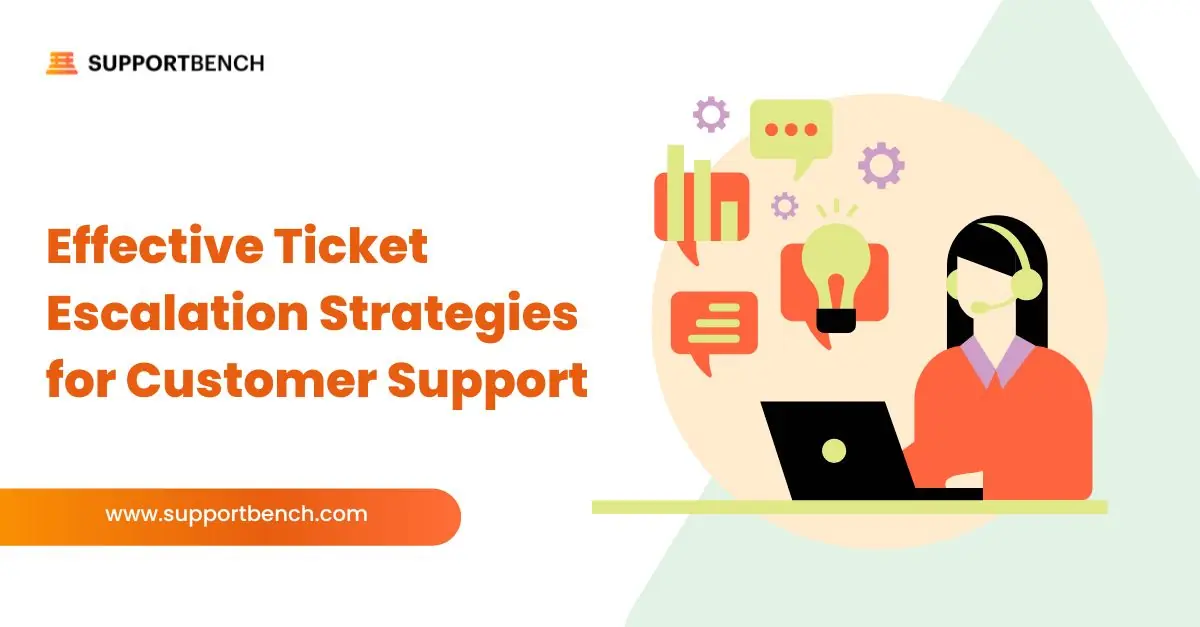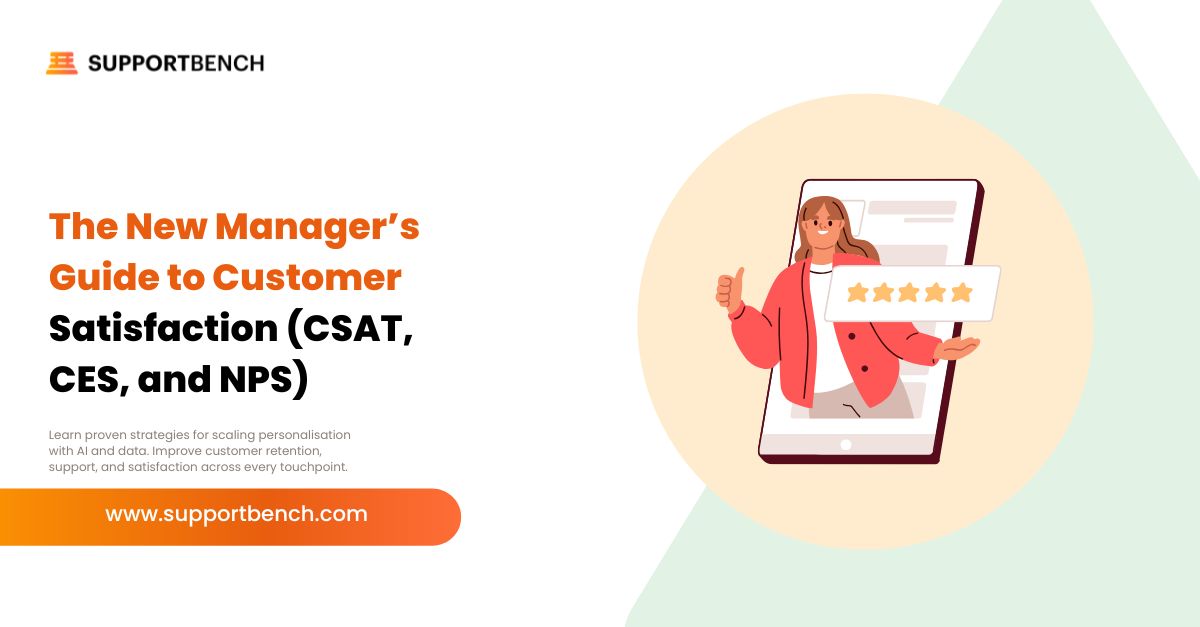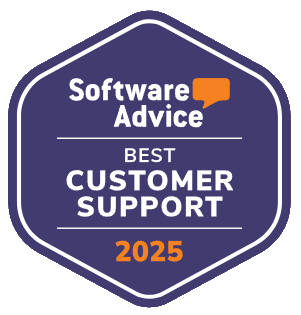In the rapidly evolving landscape of customer support, the significance of dynamic Service Level Agreements (SLAs) has grown immensely. Traditional SLAs, with their static nature, often fail to meet the changing needs of both customers and businesses. However, with the advent of dynamic SLAs, companies can now offer tailored support experiences that significantly enhance customer satisfaction and loyalty. In this context, Supportbench stands out as a leader, revolutionizing customer support through its innovative, AI-driven platform.

The Evolution of SLAs: A Game Changer for Customer Support
SLAs have long been a cornerstone in defining the relationship between service providers and their customers. But with the increasing complexity of customer needs and case variables, static SLAs are no longer sufficient. This is where dynamic SLAs come into play, offering a flexible approach that adapts to various factors such as customer value, case complexity, and even specific times of the year.
Real-World Impact of Dynamic SLAs
A report by Gartner indicated that companies adapting their SLAs based on customer importance and issue urgency saw a 15% increase in customer satisfaction scores. For example, a leading telecom company implemented dynamic SLAs to prioritize high-impact issues such as service outages, which significantly reduced resolution times and improved customer trust. By prioritizing high-value customers during peak times, they ensured critical issues were addressed promptly, enhancing customer loyalty.
Setting Up Dynamic SLAs
Setting up dynamic SLAs requires a strategic approach. It begins with a comprehensive analysis of customer data to understand varying needs. Consider factors like customer lifetime value, purchase history, and previous support interactions. Next, integrate these insights into the SLA framework, using technology to automate and adjust SLAs in real-time. Regularly reviewing and adjusting the parameters based on performance metrics and feedback ensures that the SLAs remain relevant and effective.
“In today’s fast-paced market, the one-size-fits-all approach of traditional SLAs is no longer viable. Dynamic SLAs represent a shift towards a more agile, customer-centric model.” – Julia Dawson, Senior Analyst at Forrester Research.
To effectively implement dynamic SLAs, support teams need to understand customer segmentation by recognizing the different needs and values of various customer segments and also identify key variables and determine what factors (e.g., issue complexity, customer tier) will trigger SLA adjustments. It’s vital to leverage technology by using AI and analytics tools to automate and refine the SLA adjustment process.
5 Actionable Trends for Support Leaders
- Predictive Analytics for Proactive Support: Integrating predictive analytics into your support strategy can anticipate issues before they escalate. By analyzing historical data, support teams can identify patterns and pre-emptively adjust SLAs for high-risk cases. For example, if data shows a recurring product issue every six months, you can proactively reach out to your cutomers with maintenance tips, adjusting SLAs to accommodate anticipated support requests. Using a newer support platform, you can leverage your AI tools to analyze your customer interaction history and identify potential high-risk scenarios and adjust SLAs preemptively. But keep in mind, it’s vital to then train your team to understand and act on these analytics-driven insights.
“Predictive analytics in customer support isn’t just about solving issues faster; it’s about foreseeing them and acting preemptively, which is a game-changer.” – Michael Li, Head of Data Science, LinkedIn.
- Personalized SLA Parameters: Customizing SLAs based on individual customer profiles and history can lead to more targeted support. With a more holistic Support platform, you can tailor SLAs based on your individual customer insights. If one of your customers has a history of complex issues, you can identify and then allocate more time and resources to their inquiries. This personalization will enhance your customer experience significantly. Begin by developing customer profiles based on their interactions, purchase histories, and feedback. And then tailor your SLAs to cater to individual customer needs. We’d of course recommend Supportbench’s customer health scoring to refine these personalizations.
“Personalization is the heart of customer satisfaction. Tailored SLAs are not just a support strategy; they are a statement that every customer is unique.” – Sarah Johnson, VP of Customer Experience, Zendesk.
- Leveraging AI for Real-Time SLA Adjustments: You can implement a Support platform with AI tools that analyze ongoing interactions in real time and suggest SLA adjustments. For instance, if a customer’s sentiment turns negative during an interaction, the system could automatically prioritize the case. And exceptional AI tool is capable of understanding the context and urgency of customer issues. You can then train your team to respond to AI recommendations for SLA adjustments.
“Artificial Intelligence in customer service isn’t the future; it’s the present. AI-driven SLAs are transforming how we prioritize and interact with customers in real-time.” – Alex Smith, Chief Technology Officer at Salesforce.
- Empowering Frontline Decision-Making: Enabling customer support agents to modify SLAs within predefined parameters can lead to quicker resolutions and personalized experiences. It’s so helpful to allow your support agents some autonomy to adjust SLA’s based on their judgement. This empowers your agents and will likely lead to more personalized customer experiences. Although there is some trust involved, you can still establish clear guidelines for when and how agents can adjust SLAs. And of course, provide them with training and support to ensure responsible decision-making.
“When we empower our frontline staff to make decisions, we’re not just improving response times, we’re building a team of leaders who genuinely care for customer experience.” – Emma Brown, Customer Support Manager, HubSpot.
- Feedback-Driven SLA Refinement: Regularly collecting and analyzing customer feedback can provide valuable insights into how well SLAs are serving their needs. You can use this feedback to continuously refine your SLA’s and identify trends and adjust these SLA’s accordingly. It can be quite helpful to conduct regular surveys and feedback sessions and then analyze this data to identify trends and areas for SLA improvement.
“Listening to customer feedback isn’t a passive exercise. It’s an active strategy to evolve our SLAs continuously and stay aligned with customer expectations.” – David Green, Senior Director of Customer Success, Microsoft.
The Supportbench Advantage
Supportbench is not just keeping up with the times; it’s setting the pace. Its comprehensive suite of features, such as AI-driven summaries, customizable dashboards, and advanced customer health scoring, positions it as a revolutionary tool in the realm of customer support. It is uniquely positioned to help businesses achieve these goals. Its advanced optimizations provide valuable insights for continuous improvement. Also, the platform’s intuitive interface ensures that these sophisticated tools are accessible to all team members, fostering a culture of innovation and proactive problem-solving.
6 Ways Supportbench Stands Out
- Ease of Use and Customization: Its intuitive interface and customizable features make it accessible for all levels of tech proficiency.
- Advanced AI Integration: Supportbench’s use of cutting-edge AI, including ChatGPT, for real-time assistance and data analysis is a game-changer.
- Scalability and Flexibility: Whether for a growing startup or a large enterprise, Supportbench scales to meet diverse needs.
- Comprehensive Integration: It integrates seamlessly with existing CRM systems like Salesforce, ensuring that customer data is leveraged effectively for personalized support.
- Scalable Solutions: Supportbench is designed to grow with your business, ensuring that your customer support infrastructure can handle increasing volumes and complexities without compromising on quality.
- Advanced Reporting and Analytics: The platform’s robust reporting tools provide deep insights into customer interactions, SLA performance, and agent efficiency, enabling data-driven decision-making.
The Bigger Picture
In the grand scheme, Supportbench isn’t just a software solution; it’s a strategic enabler. By transforming how customer support is delivered, it plays a pivotal role in shaping the overall customer experience. Businesses that adopt Supportbench are not just investing in a tool; they are investing in a philosophy that places customer satisfaction at the heart of their operations, driving growth and success in an increasingly competitive landscape. Supportbench isn’t just a tool; it’s a strategic partner.















